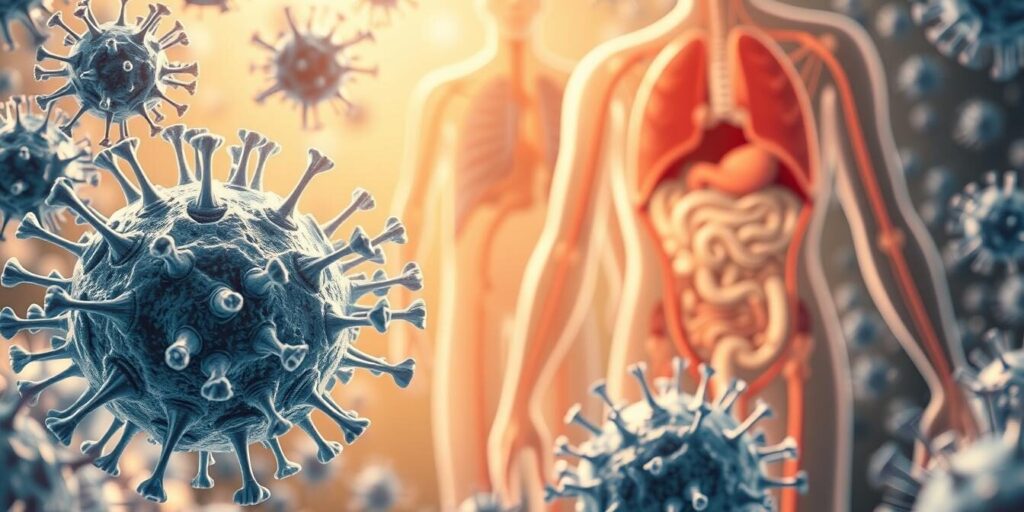What is Fatty Liver Disease?
Fatty liver disease, medically known as hepatic steatosis, is a condition characterized by the accumulation of excess fat in the liver cells. This condition can be broadly categorized into two types: alcoholic fatty liver disease (AFLD) and non-alcoholic fatty liver disease (NAFLD). Alcoholic fatty liver disease occurs as a direct result of excessive alcohol consumption, leading to inflammation and damage in the liver. In contrast, non-alcoholic fatty liver disease, which is more prevalent, is associated with obesity, diabetes, and metabolic syndrome, and can occur in individuals who consume little to no alcohol.
The liver is a vital organ that plays a crucial role in processing fats, producing bile for digestion, and maintaining various metabolic functions. Under normal circumstances, the liver breaks down fats for energy or stores them. However, when there is an imbalance between the amount of fat being delivered to the liver and the liver’s ability to process and clear this fat, excessive fat accumulation occurs. This buildup can lead to more severe conditions, such as steatohepatitis or cirrhosis, if left unchecked.
The significance of fatty liver disease in today’s health landscape cannot be overstated. With increasing rates of obesity and sedentary lifestyles globally, the incidence of NAFLD has surged, affecting millions of people. Fatty liver disease is often considered a silent condition, as many individuals remain asymptomatic in the early stages. However, it can lead to serious health complications, including liver failure. Therefore, recognizing the condition’s impact and understanding its mechanisms are essential for timely diagnosis and intervention. The growing awareness of fatty liver disease underscores the importance of healthy lifestyle choices aimed at preventing its onset and progression.
Causes of Fatty Liver Disease
Fatty liver disease, also known as hepatic steatosis, is a condition characterized by the accumulation of excess fat in liver cells. Several factors contribute to the development of this disease, primarily rooted in lifestyle and metabolic health. Obesity is one of the most significant risk factors; individuals with a body mass index (BMI) of 30 or greater are at a much higher risk of developing fatty liver. The excess body fat, particularly in the abdominal area, can lead to liver inflammation and damage over time.
Diabetes, particularly type 2 diabetes, is another major contributor to fatty liver disease. Insulin resistance, which is common in individuals with diabetes, interferes with the liver’s ability to properly metabolize fats, leading to their accumulation. Additionally, high cholesterol levels can exacerbate the condition, promoting the buildup of cholesterol in the liver alongside fat.
Alcohol consumption plays a pivotal role in the onset of alcoholic fatty liver disease. When consumed in excess, alcohol can impair the liver’s ability to process fats, resulting in the deposition of fat within the liver cells. The severity of alcohol-related fatty liver disease can vary widely, depending on the amount and duration of alcohol intake.
Genetics also play a role in the predisposition to fatty liver disease. Certain genetic variations can influence how a person metabolizes fats and sugars, increasing susceptibility to fat buildup in the liver. Moreover, various medications may contribute to the development of fatty liver by affecting liver function or altering fat metabolism. Common culprits include some corticosteroids, antiretroviral drugs, and medications used to treat cancer.
Understanding these multiple causes is crucial for effective prevention and treatment of fatty liver disease, as addressing these risk factors can significantly reduce the chances of developing this condition.
Symptoms of Fatty Liver Disease
Fatty liver disease, or hepatic steatosis, is characterized by an abnormal accumulation of fat in liver cells. Notably, many individuals may experience no symptoms in the early stages, which is a concerning aspect of the condition. As the liver becomes increasingly engorged with fat, it can begin to manifest certain symptoms, often leading to confusion or misattribution to other health issues.
One of the most common symptoms associated with fatty liver disease is persistent fatigue. Individuals may find themselves feeling unusually tired or weak, regardless of how much rest they get. This fatigue can drastically affect their daily activities and quality of life. Furthermore, discomfort in the upper right quadrant of the abdomen may also occur. This uneasy sensation is often perceived as a dull ache and may be indicative of liver irritation or inflammation.
In more advanced cases, patients may present with elevated liver enzymes, which can be detected through routine blood tests. These elevated levels can signal inflammation and potential liver damage, necessitating further evaluation by healthcare professionals. Other potential symptoms may include weight loss, jaundice, or swelling in the abdomen and legs, although these are typically associated with more severe stages of liver disease.
Recognizing the symptoms of fatty liver disease is crucial for early detection and potential intervention. Given the asymptomatic nature of the early stages, individuals with risk factors such as obesity, diabetes, or excessive alcohol consumption are advised to seek regular check-ups and screenings. The significance of maintaining awareness regarding these symptoms cannot be overstated; early consultation with a medical professional can pave the way for timely treatment and management strategies.
Diagnosis of Fatty Liver Disease
Diagnosing fatty liver disease is a critical process that requires a comprehensive medical evaluation conducted by healthcare professionals. The diagnosis usually begins with a detailed patient history and a physical examination. Physicians will assess various factors, such as the patient’s lifestyle, alcohol consumption, and any underlying health conditions that may contribute to liver issues.
Blood tests play a significant role in the diagnostic process. Elevated liver enzymes, such as alanine aminotransferase (ALT) and aspartate aminotransferase (AST), are common indicators of liver inflammation or damage associated with fatty liver disease. Additional blood tests may be performed to evaluate for viral hepatitis, autoimmune liver diseases, or metabolic conditions that can exacerbate liver problems.
Imaging techniques also provide valuable insights for detecting fatty liver. Ultrasound is typically the first imaging modality used because it is non-invasive, readily available, and cost-effective. This technique allows physicians to visualize liver fat accumulation without the need for any surgical procedures. Other imaging studies, such as CT scans or magnetic resonance imaging (MRI), can provide further information regarding the liver’s structure and the extent of fatty infiltration.
In some cases, if the diagnosis remains uncertain, a liver biopsy may be recommended. This procedure involves taking a small sample of liver tissue for microscopic examination. A biopsy not only confirms the presence of fatty liver but also evaluates the degree of inflammation and fibrosis in the liver, which are crucial for assessing the disease’s severity and determining the best course of treatment.
In conclusion, the accurate diagnosis of fatty liver disease is paramount for effective management of the condition. By utilizing a combination of blood tests, imaging techniques, and biopsy, healthcare professionals can ensure a precise diagnosis and distinguish fatty liver from other liver diseases, paving the way for appropriate intervention and care.
Complications of Untreated Fatty Liver Disease
Untreated fatty liver disease can lead to a series of serious complications, significantly impacting a person’s overall health. One of the primary risks associated with this condition is the progression to non-alcoholic steatohepatitis (NASH), a more severe form of fatty liver disease characterized by inflammation and liver cell damage. In NASH, the accumulation of fat in the liver is accompanied by inflammation, which can lead to further complications if not addressed. This progression may eventually result in the development of cirrhosis, a stage where normal liver tissue is replaced with scar tissue, impairing liver function and making the organ more susceptible to further damage.
Moreover, cirrhosis can become life-threatening, leading to liver failure, a condition where the liver loses its ability to perform vital functions. The seriousness of liver failure cannot be understated, as it may necessitate a liver transplant to restore health, showcasing the critical need for early intervention and management of fatty liver. Furthermore, the complications of fatty liver disease do not solely affect the liver; they also elevate the risk of developing other health conditions, particularly cardiovascular disease. Research indicates a strong association between fatty liver disease and increased risk factors for heart disease, such as hypertension and dyslipidemia. These connections highlight the systemic nature of the disease, suggesting that untreated fatty liver may not only compromise liver health but may also contribute to broader metabolic disturbances.
Recognizing the risks of untreated fatty liver disease emphasizes the importance of timely medical attention and lifestyle modifications. Regular screenings, lifestyle changes like diet and exercise, and medical consultations can play a pivotal role in preventing the progression of fatty liver and mitigating associated health complications.
Treatment Options for Fatty Liver Disease
Treatment for fatty liver disease primarily focuses on lifestyle modifications, as there is currently no specific medication approved exclusively for this condition. Effective management strategies emphasize the importance of dietary changes and regular physical activity. Adopting a well-balanced diet low in refined carbohydrates, saturated fats, and added sugars can significantly impact liver health. Incorporating whole grains, lean proteins, and a variety of fruits and vegetables is crucial in combating fatty liver and promoting overall wellness.
Exercise plays a pivotal role in managing fatty liver disease. Engaging in regular physical activity can help reduce liver fat and enhance metabolic health by improving insulin sensitivity. It is recommended that adults aim for at least 150 minutes of moderate-intensity aerobic exercise each week, alongside strength training exercises. This combination not only aids in weight loss but also contributes to an overall healthier lifestyle, which is essential for those with fatty liver disease.
In addition to lifestyle changes, medical evaluations by healthcare providers are crucial in the ongoing management of fatty liver. These specialists can monitor liver function through regular blood tests and imaging studies, ensuring timely identification of any progression in the disease. In some cases, healthcare professionals may recommend medications to manage associated conditions such as obesity, diabetes, or high cholesterol, which can indirectly benefit liver health.
It is important to note that while no medications specifically target fatty liver disease, emerging research continues to explore potential pharmacological options. Communicating any concerns with a healthcare provider ensures personalized care and appropriate guidance during treatment. By combining these management strategies, individuals affected by fatty liver disease can mitigate potential health risks and enhance their overall quality of life.
Dietary Recommendations for Fatty Liver Disease
Adopting a balanced diet is crucial for managing fatty liver disease and supporting overall liver health. Individuals diagnosed with this condition are encouraged to focus on a nutrient-rich diet that is abundant in fruits, vegetables, whole grains, and healthy fats. These foods provide essential vitamins, minerals, and antioxidants that help in reducing liver inflammation and promoting a healthy metabolism.
Fruits such as berries, oranges, and apples, along with a variety of vegetables—especially leafy greens like spinach and kale—should be staples in meals. Whole grains such as oats, brown rice, and quinoa provide necessary fiber that aids digestion and helps maintain a healthy weight, ultimately benefiting those with fatty liver. Healthy fats, found in foods like avocados, nuts, seeds, and fatty fish (such as salmon or mackerel), are important for supporting liver function and reducing fat accumulation in the liver.
Conversely, individuals with fatty liver should avoid certain foods that can exacerbate the condition. Sugary foods and beverages, including sodas, pastries, and candies, can significantly contribute to fat buildup in the liver. Moreover, refined carbohydrates, such as white bread and pasta, should be minimal in one’s diet, as they can elevate blood sugar levels and lead to further fat accumulation. Processed foods—often high in unhealthy fats and sodium—should also be limited, as they can worsen liver health.
Meal planning can play a significant role in achieving better liver health. Preparing balanced meals that align with dietary recommendations can help maintain healthy eating habits. It is advisable to incorporate regular meals that prioritize whole, unprocessed ingredients while being mindful of portion sizes. This targeted approach will not only support the management of fatty liver disease but also promote overall well-being.
Lifestyle Changes for Prevention
Preventing fatty liver disease necessitates significant lifestyle modifications that promote overall well-being and liver health. One of the most effective strategies is maintaining a healthy weight. Excess body fat, particularly around the abdomen, increases the risk of developing fatty liver conditions. A balanced diet, rich in fruits, vegetables, lean proteins, and whole grains, can facilitate weight loss and prevent obesity-related health issues. Monitoring portion sizes and reducing the intake of processed foods high in sugar and saturated fats is essential for achieving and maintaining a healthy body weight.
Regular physical activity is another cornerstone for the prevention of fatty liver disease. Engaging in at least 150 minutes of moderate aerobic exercise each week, such as walking, cycling, or swimming, can significantly lower liver fat levels and improve overall metabolic health. Strength training should also be incorporated into the routine at least twice a week, as it contributes to muscle mass and enhances metabolic function.
Limiting alcohol consumption plays a crucial role in preventing liver inflammation and fatty liver disease. Excessive alcohol intake can lead to liver damage and exacerbate fatty liver conditions. It is advisable to adhere to recommended guidelines, which suggest moderate alcohol consumption—up to one drink per day for women and up to two drinks per day for men. Additionally, individuals with existing liver conditions should consider abstaining from alcohol altogether to prevent further damage.
Moreover, effectively managing underlying health conditions such as diabetes, hypertension, and high cholesterol is vital. Regular check-ups with healthcare providers can facilitate the monitoring and management of these conditions, which, if left unchecked, can contribute to fatty liver disease. Making consistent, small changes to one’s lifestyle can significantly mitigate the risk of developing this condition and improve overall health, rendering long-term success achievable through perseverance and dedication.
When to See a Doctor
Recognizing when to seek medical advice regarding fatty liver disease is crucial for maintaining overall health. It is essential to be attentive to various indicators that may signify the presence of a liver condition. If an individual experiences unusual symptoms such as significant fatigue, unexplained weight loss, abdominal discomfort, or jaundice, it is advisable to consult a healthcare professional promptly. These symptoms may indicate an underlying issue affecting liver function that requires further evaluation.
Moreover, a family history of liver disease can increase one’s risk of developing fatty liver disease. Individuals who are aware of such a genetic predisposition should proactively engage with their healthcare provider, even in the absence of symptoms. Regular medical check-ups allow for early detection and monitoring of any changes in liver function, which is vital for effective management and potential treatment options.
Additionally, individuals living with existing health conditions such as diabetes, obesity, or high cholesterol should remain vigilant. These factors can further elevate the risk of developing fatty liver disease and may warrant more frequent discussions with a healthcare provider about liver health. Awareness and preparedness can lead to timely interventions that can significantly alter the course of the disease.
Overall, understanding when to see a doctor is indispensable in the context of fatty liver disease. Regular screenings, especially for those with risk factors or symptoms, enable early diagnosis and appropriate interventions. Maintaining open communication with healthcare professionals not only assists in preventing advanced liver complications but also promotes overall health and well-being.




